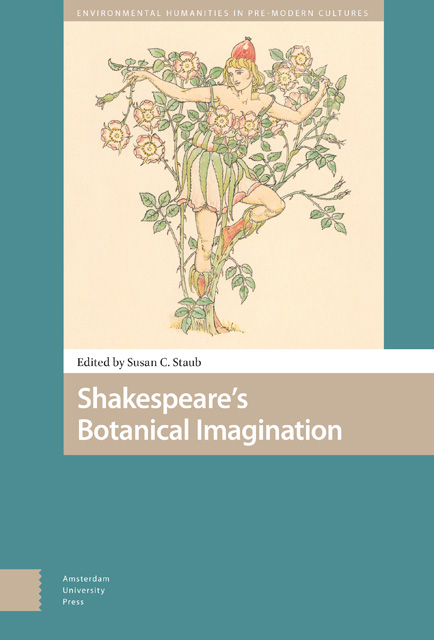2 - The “idle weeds that grow in the sustaining corn” : generating plants in king lear
Published online by Cambridge University Press: 17 October 2023
Summary
Abstract
This essay considers the rampantly growing cornfield of Act 4 of King Lear in order to interrogate the play’s dual interest in land and female bodies. Looking in particular at weeds, I seek to reconfigure the weedy crown Lear fashions as emblematic of his connection with his daughters, his kingdom, and with nonhuman nature. Weeds, the lowest class of plant life, provide an apt metaphor for the vexed hierarchies of the play. Traditionally defined simply as “plants out of place,” weeds are devalued because they defy human control. My argument sees weeds as part of the ecological order—weeds come after the storm—even if they challenge human order. A reading that focuses on the fertility of the land evidenced by the weeds and on the human responsibility for and connection to what grows there offers hope for both the literal and the social landscape of the play.
Keywords: generation, arable field, female bodies, agency, resistance, Vulnerability
In Act 4 of King Lear, when Cordelia describes Lear as “mad as the vexed sea,” singing aloud as he wanders through the cornfield wearing his parodic crown of “rank fumitor” and other weeds (4.4.2–7), she reminds us of the repercussions that Lear’s abdication has evoked, not just to his family and kingdom but to the very land he should metaphorically husband. The abundant and even sexy landscape of Act 1—rich and pleasure-filled, with “plenteous rivers and wide-skirted meads” (1.1.63)—has been reduced to a field of darnel and nettles, pernicious weeds that mimic, poison, and choke the corn (i.e., grain) necessary to sustain Lear’s subjects. But this scene also suggests the complexity of nonhuman nature in the play, a nature that is teeming and alive and vitally enmeshed with humankind. In this essay, I ponder how this scene interrogates one of the primary issues of the play, in particular, its dual investment in land and female bodies. I am interested in two interrelated concerns in King Lear: the fertile British landscape and the play’s anxiety about female reproduction
- Type
- Chapter
- Information
- Shakespeare's Botanical Imagination , pp. 63 - 86Publisher: Amsterdam University PressPrint publication year: 2023

